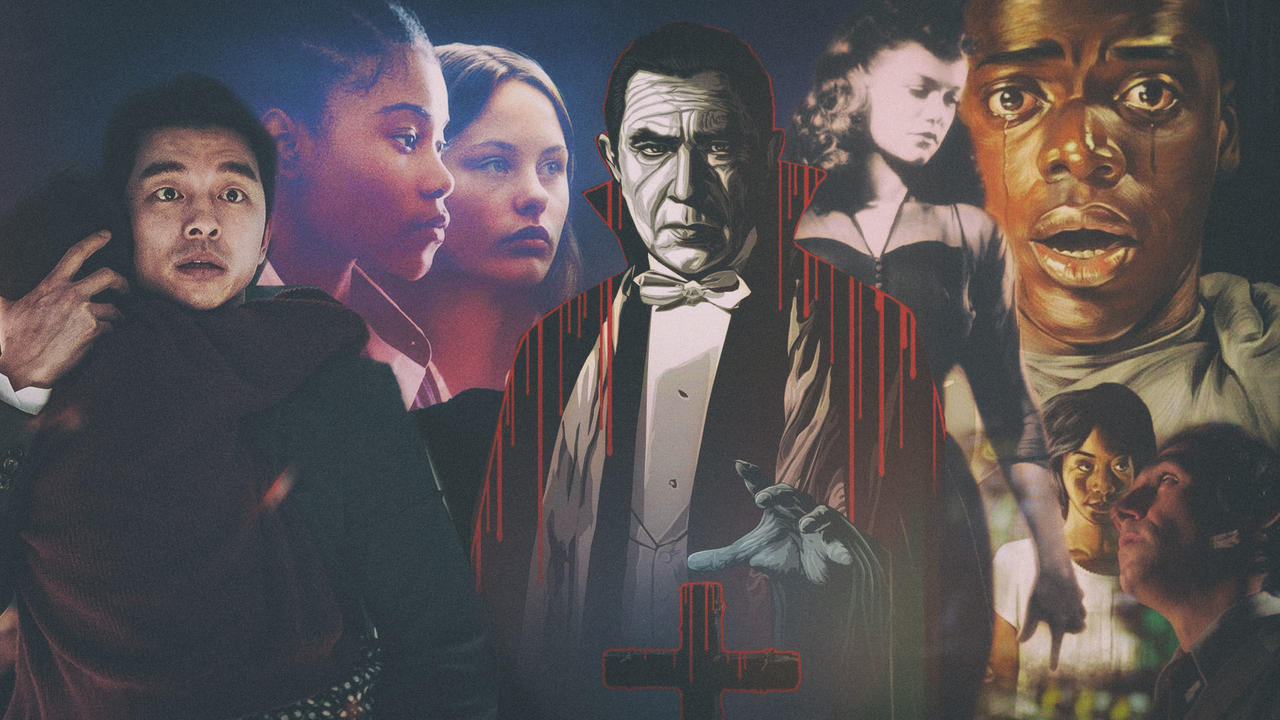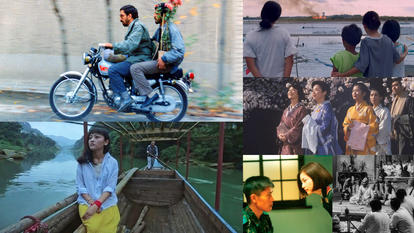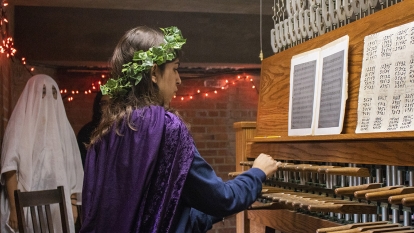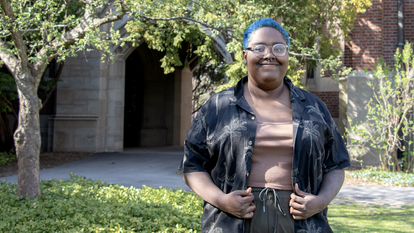
Thrills, Chills, and Frissons: Two Wellesley Professors on Why We Love Scary Movies
Wellesley community members near and far are getting into the Halloween spirit in creative new ways this year. On campus, the Office of Student Involvement has been hosting weekly outdoor movie nights, including Halloween classics such as Hocus Pocus and Coco, and the Schneider Board of Governors held its annual “Spooky SBOG” event featuring virtual ghost stories, tarot card readings, and an at-home costume contest.
In the Wellesley Halloween spirit, we asked Codruţa Morari, associate professor of cinema and media studies and French, and Vernon Shetley, professor of English focusing on contemporary poetry and classic Hollywood cinema, for their thoughts on that most popular Halloween genre: horror movies.
How would you define a horror film?
Vernon Shetley: The critic Robin Wood, a pioneer in the study of horror, defined the fundamental structure of horror as “normality is threatened by the monster.” That still seems a pretty good place to start. Or we could define horror in terms of the effects it’s meant to have on the viewer: fear, shock, anxiety, aversion.
Codruƫa Morari: Horror is a genre that uses overwhelming images and overpowering sensations that ultimately catalyze responses that are utterly familiar. Their work is to scare us, to appeal to our most primal impulses.
What is the psychological appeal of horror films? What makes them scary?
Shetley: Scholars and philosophers have offered many answers to this question; I don’t feel entirely persuaded by any of them. I would point to one key aspect of the viewing experience: Whatever happens to the characters within the film, we, the viewers, are alive at the end of the movie. Horror films make us feel as if we’ve been through a harrowing experience and emerged triumphant.
“The psychological appeal of horror films is an attempt at exorcism, to confront and work through certain underlying anxieties. In a sense, they are cathartic.”
Codruţa Morari, associate professor of cinema and media studies and French
Morari: They are the ultimate enactment of a society’s sense of dread. That dread comes in the form of the “other,” and the horror genre wrestles with that other. The psychological appeal of horror films is an attempt at exorcism, to confront and work through certain underlying anxieties. In a sense, they are cathartic; they are for modern viewers what tragedies were for the ancient Greeks. What makes them so scary is this sense of “otherness.” Horror films create others, and in so doing they also negotiate and deal with these others. Others do not just come out of the dark; they are a function of circumstances and situations, which is to say they have a lot to do with historical constellations and sociopolitical determinations.
What makes a good horror movie?
Shetley: Monsters in horror movies are always metaphors. No one is really afraid that a blood-sucking aristocrat from Transylvania is going to show up on your doorstep. A good horror movie connects the imaginary fears embodied by the monster to its audience’s genuine, deep-seated fears.
Morari: Thrills, chills, and frisson; sweat on your brow, a night without sleep. The mirror in Candyman, the shower in Psycho. The simple formula for a horror film: Normality is threatened by the other, by something monstrous. Normality is typically obvious and unexceptional, usually staid and perhaps even boring: the heterosexual monogamous couple, the stable family, the basic social institutions (police, church, armed forces) that support and defend the family, property, and community. The monster is much more protean; indeed, it changes from period to period as society’s basic fears cloak themselves in different costumes.
What are some of your favorites from the genre?
Shetley: I created my course on American horror films less because the genre is particularly important to me than because there seemed to be a great deal of student interest in the subject. There are many horror films I admire, certainly, some of which I teach in my course, from Jacques Tourneur’s Cat People (1942—not the dreadful 1982 remake!) to Jordan Peele’s Get Out (2017), one of the most perfectly constructed films I know. So I’ll name two films that I feel haven’t gotten the attention that they deserve: Larry Cohen’s God Told Me To (1976) and Jonathan Glazer’s Under the Skin (2013), both of which conduct a searching exploration of contemporary social structures through the device of the alien arrival narrative. Under the Skin is a challenging work, with an extremely slow build, but it’s certainly one of the most deeply unsettling films I’ve ever seen.
Morari: French cinema of excess (Claire Denis’s Trouble Every Day (2001), that films horror scenes like love scenes in long shot, so deeply disturbing), contemporary South Korean horror (everyone should watch Train to Busan (2016) by Sang-ho Yeon, centered on a pandemic), and recent zombie films. I recently wrote about Zombi Child (2019) by Bertrand Bonello, which is not exactly a horror movie, but has horror stylistic components.



